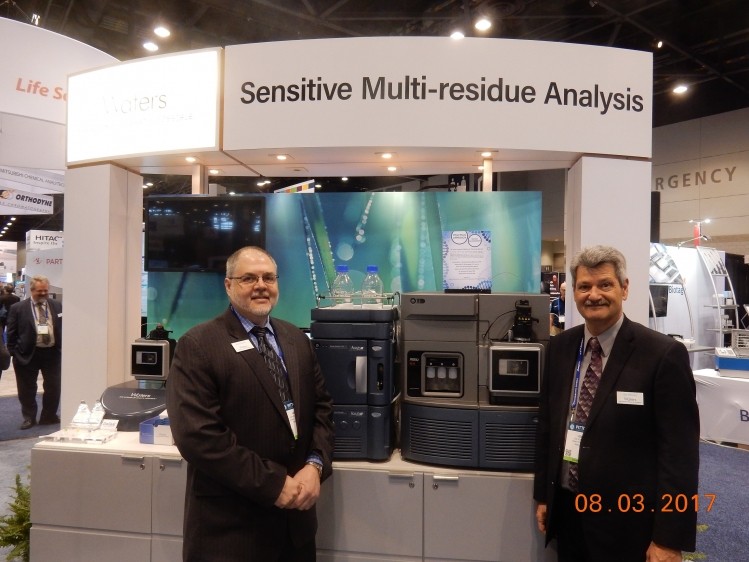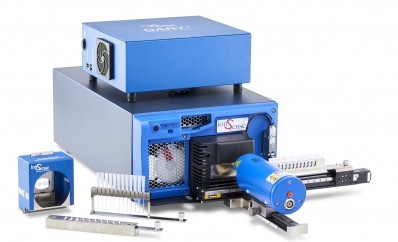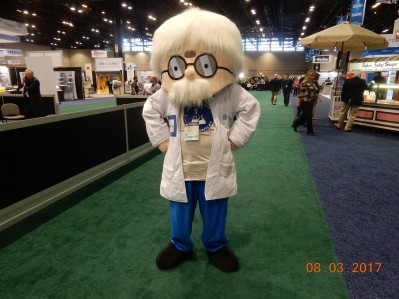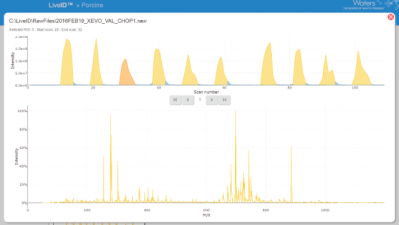Dispatches from Pittcon 2017
Getting authentic samples and software critical in food analysis - Waters

Waters’ quadrupole time-of-flight (QTof) mass spectrometers with an iKnife sampling device, Rapid Evaporative Ionization Mass Spectrometry (REIMS) ion source and MassLynx mass spectrometry software are used to detect food fraud.
Joe Romano, senior manager at Waters Corporation, told FoodQualityNews that: “In terms of food authenticity the one that first sticks out in my mind is determining whether or not the product that you are purchasing is the actual product.
“For fish and chips are you eating cod, tilapia or a whitefish? It overlaps with food fraud, with people mislabelling their product saying it is a particular authentic Manuka honey when it has been diluted with a lower cost honey and it is done for profit.”
Fraud can turn harmful
Ken Roznak, principal business development manager at Waters Corporation, said food authenticity and fraud occasionally turns into a food security or safety issue.
“Most of the time if it is a substitution of a product the consumers that are buying those products are getting something they paid high dollar value for and not getting what they think but usually it is not harmful,” he told us.
“But we have seen in the past where people have tried to defraud, we keep going back to melamine in China, where they wanted to defraud the test that checks for total protein. The higher the protein content the more money you would get for the milk powder.
“Not understanding the chemistry and contaminating the powdered milk with melamine to increase the apparent protein content, when that got into the human body and reactions within the cells and organs it did harm to babies.
“So the food authenticity and fraud area, although it is mainly done for the economic reasons, it can on various occasions create harmful situations for the consumer.”
Roznak said scientists want to see harmonisation of as many methods as possible.
“As you work up further and get into the government things begin to stall a little bit,” he said.
“So for one government to work with another government, to work with private industry, to work with manufacturers and the likes of Waters and other vendors then it becomes a little more difficult and slows the process down.
“The scientists are like ‘well, we can do this, lets get it done’ and then the process slows down as it does have to go through each of the countries regulatory areas and that just takes time.”
Romano said as food companies are global they run into such issues constantly.
“Trying to export product to Asia for example and dealing with the Chinese Government or Asian governments where they have a set of methods they are using which are different from the methods that the exporter is using. There is always a dispute and this affects global trade which is a multi-billion dollar business.
“Everybody wants to try to harmonise methods it is just a challenge to do that, there are consensus organisations like AOAC, there is ISO, Codex so I think everybody would like to get to that point it just takes a lot of time to agree on what we call a dispute method so we can minimise these trade barriers.”
Ensuring an authentic sample
Roznak said technology is ‘getting there’ but running samples and getting what is a truly authentic sample is one of the biggest challenges.
“Partnering with our collaborators like Chris Elliott and others in the industry that are looking at food fraud and authenticity is important. Getting those, what you would call authentic standards, to create that library is quite critical,” he said.
“That is going to be the slow part. It does take time to run many samples so you have a very good representation, the more samples the better off your yes/no answer is going to be.”
He added there has been a ‘little more uptake’ on the analytical side but if manufacturers can use and validate simpler methods like ELISA they are going to continue to do that.
“They are looking more towards the analytical technology and they are all being cautious on uptake as they are very used to ELISA tests and something new takes a bit of time,” said Roznak.
“But I think so they don’t risk their brand they are moving more towards LC-MS. I think they effectively want something more towards REIMS eventually so taking that and reducing the size and cost of such a system so they can put it at the point of source or at manufacturing.”
Romano said with REIMS the user has to create a database of authentic samples which is stored in the software.
“Once you have that database after running a series of samples then you can start doing the unknown testing. A lot of people rely on NIR but that is not specific,” he said.
“It boils down to risk assessment which is what people and companies are doing today as it is just impossible to get that quick answer especially trying to identify what else is there. We are just not there yet with technology but we are moving towards that area.”
Software role crucial
Romano said customers want a red light green light type software system with no interpretation and just an answer.
“[LiveID] will allow, once the database is created and you have the system set up, anybody can go and do testing and get that quick answer without having to do any kind of manipulation of the software or the instrument.”
Romano said software is critical if you look at vendors in the mass spectrometry world.
“The hardware available is based on the vendors but they all do a good job and then it comes down to software, to visualising that data, how easy is it to review the data and come up with an answer quite quickly,” he said.
“As in food fraud and authenticity you want to catch it before it gets to the consumer. Most of the time it ends up as a crisis and we are putting out the fire after the fact instead of trying to prevent that fire from happening.
“At Waters we think software is going to be the critical interface so the experts can use it but then the novice can also put together a reasonable workflow through the entire analysis.
“So they can easily go through and see ‘yes, these things are definitely in here, these things I am not so sure of, maybe I better look into it a little more or get an expert involved’ but it is going to be critical to go from quick screening all the way down to confirming that compound is there.”


















